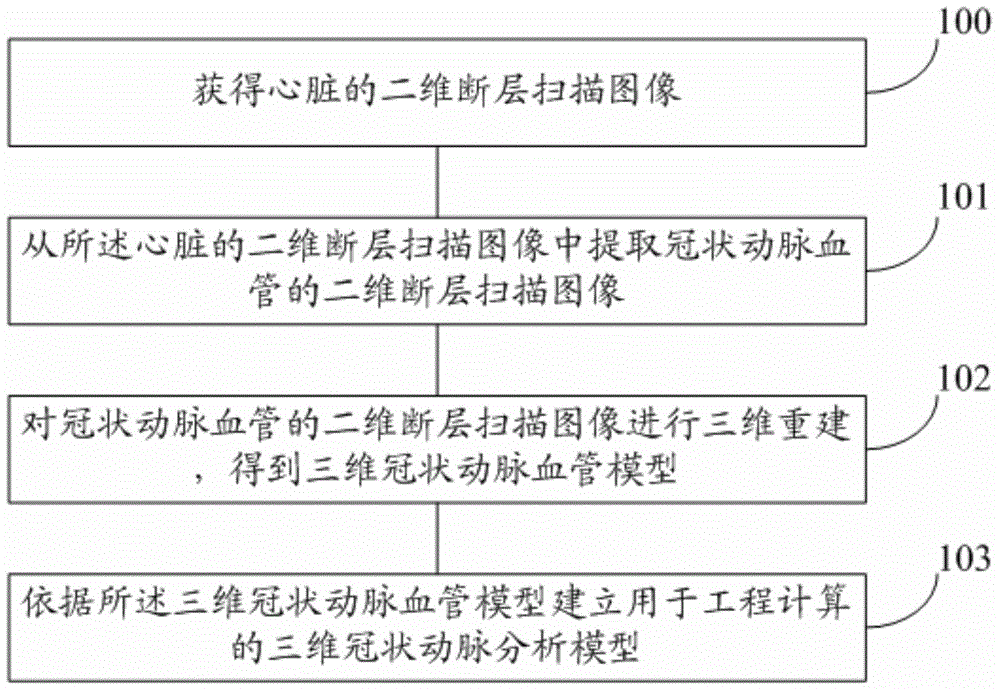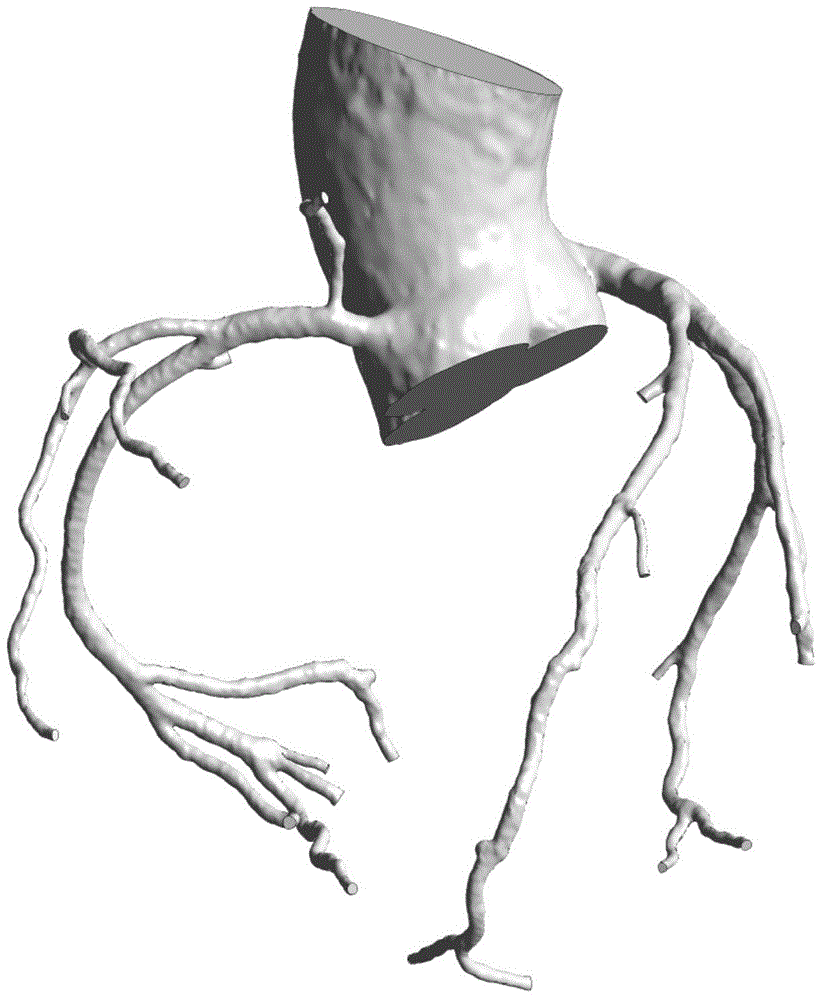Construction method of three-dimensional coronary artery analysis model and system thereof
A coronary artery and analysis model technology, applied in 3D modeling, image data processing, instruments, etc., can solve the problems of increasing the risk of patient death, invasive patient injury, increasing medical costs, etc., to reduce the psychological and physical pain of patients , broad application prospects, the effect of reducing the risk of death and medical costs
- Summary
- Abstract
- Description
- Claims
- Application Information
AI Technical Summary
Problems solved by technology
Method used
Image
Examples
Embodiment 1
[0031] refer to figure 1 , is a flow chart of a method for constructing a three-dimensional coronary artery analysis model provided in an embodiment of the present invention. In this embodiment, a method for constructing a three-dimensional coronary artery analysis model may specifically include the following steps:
[0032] Step 100, obtaining a two-dimensional tomographic image of the heart. In this embodiment, a two-dimensional tomographic image of the heart of a patient with symptoms of cardiovascular disease is obtained. The symptoms of cardiovascular disease include chest tightness, palpitations, and syncope. In a preferred embodiment of the present invention, the step 100 to obtain a two-dimensional tomographic image of the heart may include: using a three-dimensional tomographic scanner to perform a three-dimensional tomographic scan on the heart with symptoms of cardiovascular disease to obtain a two-dimensional tomographic image of the heart dimensional tomographic ...
Embodiment 2
[0055] refer to Figure 7 , is a flow chart of a method for constructing a three-dimensional coronary artery analysis model provided in an embodiment of the present invention. In this embodiment, a method for constructing a three-dimensional coronary artery analysis model may specifically include the following steps:
[0056] Step 200, obtaining a two-dimensional tomographic image of the heart. A three-dimensional tomographic scanner can be used to perform three-dimensional tomographic scanning on the heart with symptoms of cardiovascular disease to obtain a two-dimensional tomographic image of the heart.
[0057] Step 201 , performing three-dimensional heart reconstruction on the two-dimensional tomographic image of the heart by using continuous three-dimensional modeling to obtain a three-dimensional heart model. The so-called continuous three-dimensional modeling refers to the method of continuous difference value of the two-dimensional plane figure scanned by the cross-se...
Embodiment 3
[0083] refer to Figure 10 , is a structural block diagram of a system for constructing a three-dimensional coronary artery analysis model provided in an embodiment of the present invention. In this embodiment, a system for constructing a three-dimensional coronary artery analysis model may specifically include: a scanning module 10, an extraction module 11, and a three-dimensional reconstruction Module 12 and Model Building Module 13, where:
[0084] The scanning module 10 is used to obtain a two-dimensional tomographic image of the heart.
[0085] The extraction module 11 is configured to extract a two-dimensional tomographic image of coronary arteries from the two-dimensional tomographic image of the heart. The extraction module 11 is connected with the scanning module 10 .
[0086] The three-dimensional reconstruction module 12 is configured to perform three-dimensional reconstruction on the two-dimensional tomographic image of the coronary artery to obtain a three-dimen...
PUM
 Login to View More
Login to View More Abstract
Description
Claims
Application Information
 Login to View More
Login to View More - R&D
- Intellectual Property
- Life Sciences
- Materials
- Tech Scout
- Unparalleled Data Quality
- Higher Quality Content
- 60% Fewer Hallucinations
Browse by: Latest US Patents, China's latest patents, Technical Efficacy Thesaurus, Application Domain, Technology Topic, Popular Technical Reports.
© 2025 PatSnap. All rights reserved.Legal|Privacy policy|Modern Slavery Act Transparency Statement|Sitemap|About US| Contact US: help@patsnap.com



